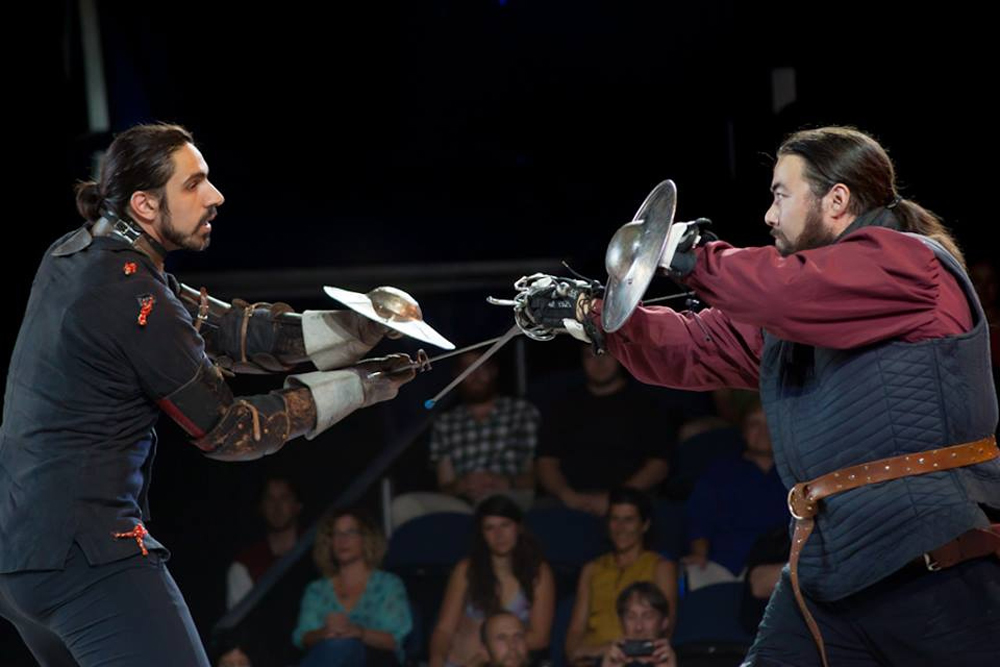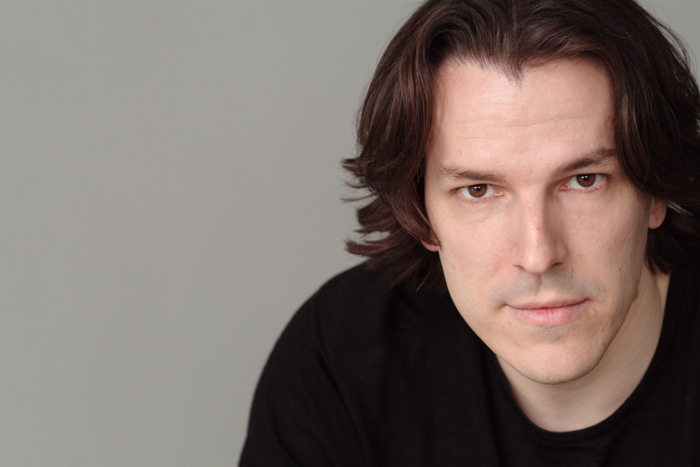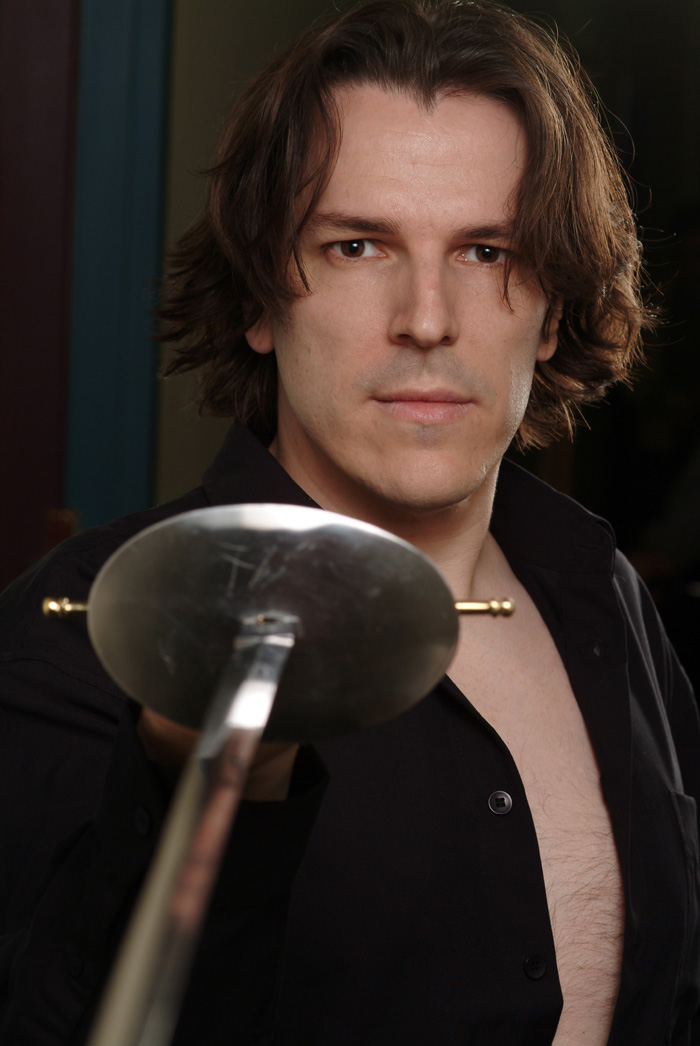Storytellers of the Blade: Accuracy in Swordplay


Sebastien de Castell is the director of strategic program development at the Vancouver Film School and a former fight choreographer and actor, and he just published his first novel, "Traitor's Blade." De Castell contributed this article to Live Science's Expert Voices: Op-Ed & Insights.
Human beings have a complicated relationship with the sword. On the one hand, it's an instrument of violence with a long history written in blood. Yet, it also has the capacity to mesmerize with the beauty of its varied forms and the way a blade can dance in the air. To watch a sword skillfully wielded is to see both the brutishness and the elegance in human nature. I've had the fairly rare opportunity to choreograph sword fights both for the theatre and in print as part of my fantasy novel, "Traitor's Blade" — is there a difference in working with the two different mediums? Every choreographer and every writer has their own process for developing a fight scene, but I always start from a basic premise.
1. Violence is boring
There are so many fights, stabbings, murders and assorted forms of torture in media these days that it's easy to confuse violence with drama. But violence isn't any more inherently dramatic than ordering coffee. Don't believe me? Imagine two martial artists walking into a room. Neither one has any expression on their faces. They begin fighting — punching, kicking, jumping, spinning — with speed and precision. They whirl around each other for a few minutes and then one man successfully subdues the other and breaks his neck. Do you care whether it was character A who killed B or B who killed A? Is there anything dramatic in the outcome?
Now instead imagine an elderly woman walking into a coffee shop. She stumbles along with her walker, barely able to make it from the door to the counter. The ravages of the cancer in her bones make this simple trip — one she's done a thousand times before — the last before she will move into the hospice that will house her for the paltry remaining days of her life. The little moments of this journey — saying hello to the young man behind the counter, choosing which coffee to buy, opening her purse, making the last purchase she'll make for herself — are the memories she'll take with her. It's not much, but it's everything that's left. But the man behind her in line is annoyed. The old woman is taking too long and he's sick of coming into this damned coffee shop on the way to work every day only to end up being late for a meeting because of some old codger holding up the line. He starts to rush her. He's loud and he's angry and all this old woman wants to do is shuffle away, with her walker, away from the counter and out of the shop. Sensing she's about to leave, the man begins to push past her with a perfunctory "excuse me." But the old woman turns. Just in that moment she turns to this man who threatens her with nothing more than his bluster and angry words and she says "no." The fight begins.
That emotion you're starting to feel is driven by the drama of the situation, and your anticipation to see what comes next emerges from the second premise.
2. The best fights are about character, not plot
Get the world’s most fascinating discoveries delivered straight to your inbox.
The mechanisms of violence aren't what make a fight interesting. What's interesting about a fight scene are the stakes for the character; the way that character fights first with his or her own fear, and only then with the opponent, and then what that individual character's approach to fighting reveals.
Take the following two films: "The Princess Bride" and "The Duelists." You'd have trouble finding two movies whose tone and style are more different. "The Princess Bride" is a light-hearted, swashbuckling fantasy, choreographed by the incredible Bob Anderson (who worked with folks like Errol Flynn back in the day.) "The Duelists" is a dark, gritty Napoleonic tale based on the short story by Joseph Conrad. The fights were choreographed by William Hobbs who was instructed by director Ridley Scott to make sure the fights looked dirty and ugly and nothing like the swashbuckling of earlier films. But despite the radical differences in the fights of those films, in both cases every action tells you about the character in the fight. The way the two opponents go at it are a reflection of their personalities, their fears and their backgrounds.
We care about Wesley's fight with Inigo in "The Princess Bride" because we can sense that these two men admire each other. Their fight is as much an exploration of the other's talents as it is a duel. In fact, our sense of jeopardy comes from the fact that these two men shouldn't have to be enemies, and yet, their situation means that one may well die at the hands of the other. Contrast this with the messy, stuttered fights between Feraud and D'Hubert in "The Duelists." One man, arrogant and lusting to use violence as his way of getting back at those he believes look down on him. The other, desperate and unsure of what to do — fearing that this fight will end in either death or dishonor. The moves matter; the weapons matter; but only because they allow the audience to see inside the characters and their conflict.
One of the reasons why I love writing Falcio (the main character in "Traitor's Blade") is because he sees each fight as a problem to be solved — he tries to intellectualize the battle and find some ingenious way to survive. But his own past sometimes comes to the fore and takes him over. In those moments, all of his skill and intellect disappear, replaced by rage and recklessness, and we realize he's not the man he thinks he is.
Once an author finds the essence of the story — the character-driven tale that must be told — the mechanisms to translate it to the stage, the screen, and the page all work very differently from one another.
3. Books come with an infinite budget
Hiring and training actors and stunt professionals is an expensive business, whether you're making a movie or staging a play. Books, on the other hand, let you have as many characters fighting as you want, all for free! You also don't have to worry about safety — kill your characters as many times as you want and then hit "undo" on the keyboard and they all come back to life. That is, regrettably, not an option with actors in real life. So in movies and on stage, there's a constant push and pull between asking the question, "What action would best convey the drama of this moment in the fight?" versus, "What can we do within budget while ensuring the safety of the actors?" It's worth pointing out that the first and most important step you need to take in protecting the actors is to ensure that the stunt choreographer or fight director is qualified and prepared. I've choreographed plenty of fights, but I wouldn't just jump into a project right now without serious preparation time because I'm out of practice, and actors deserve to have someone with the right skills, experience and current qualifications to take care of them.
4. Every medium has a different viewpoint
One of the most pronounced differences between the three storytelling mediums is the way in which viewpoint operates. Theatre has a single camera. Wherever you're sitting, that's the camera. What that really means for a choreographer is that the fight has to look as good as possible from an incredibly wide range of angles.
This is very different from movies, where the camera can come in close or move far away; it can take on the point of view of the hero or of the villain or of any number of bystanders. You would think that books would have the most flexible camera of all — after all, you can write from any angle you like. However, in practice, the opposite is true. Shifting viewpoints within a scene in a book undercuts the dramatic tension and diminishes the reader's engagement. Therefore the emotion can really only be understood through one set of eyes — those of the scene's viewpoint character.
5. Movie and stage fights can be less realistic than those in books
This might sound odd at first, but it's absolutely true. Imagine our heroine jumps in the air, does three backflips, tosses four swords in four different directions, and lands elegantly on her feet as each blade strikes its intended target. If you show that action on the screen, the audience's eyes will tell them its true, even if they would otherwise think it preposterous. Similarly, watching a play means engaging in a heightened suspension of disbelief — after all, we know the actors aren't really killing each other, but we accept it because that's part of seeing a play. In a book, however, you're literally asking the reader to create all the action in their heads based solely on the words you put on the page. Anything that doesn't make sense will look like a foggy mess in the reader's mind. For this reason, you have to work harder to create a sense of realism in the movements and actions that you put on the page than you would on the screen.
6. In books, the reader is choreographer, the author is teacher
We experience fight scenes passively when watching them on the screen or on the stage because every part of the action is placed before us. This means you don't need to explain a move or series of moves because the audience can see them in real time. However a book can't describe every movement, every posture, every detail. An author who tries to do so will invariably make the experience of reading about the fight become tedious and slow precisely when the reader wants to feel caught up in the flow of the action. So fight scenes on the page require a constant search for economy, for finding things we can leave to the imagination of the reader.
The author shows us small moments of the fight — the sudden thrust of a sharp blade headed for a character's belly or the worn, wooden shield beginning to splinter under the crushing barrage of blows of a horseman's axe. These details give us just enough grounding in the nature of the fight so that, in the very next sentence, we can be inside acharacter's emotions — feeling their fear or anticipation, all the while imagining the continuation of the fight without requiring anyone telling us exactly what's happening. That, for me, is the magic of a swordfight in a novel — when the reader ceases to be a mere bystander and, in fact, becomes the choreographer.
7. Let the emotional story reign supreme
The true joy of choreographing a swordfight — whether on the stage, the page, or the screen — is in turning the fight into a new language for the audience. Let the fight scene be a form of dialogue in which each character's actions are as distinct, personal and emotionally motivated as the words they use. Sometimes this requires considering accurate historical forms (rapiers and broadswords moved very differently from one another and throwing one at your opponent was almost never a good idea), and sometimes it means ignoring them (the hell with it — throw the broadsword if it works!)
Most of what we know about "true" swordfighting comes from reconstructions — books and manuals that have been loosely interpreted. Imagine if someone five hundred years from now found a book on karate instruction. They might imagine that warriors from our time applied all of the techniques described when in fact, only a small fraction of people in combat would use karate at all, of those, only some would use that particular form of karate, and those few would use some techniques all the time and most of the techniques hardly at all.
For example, Domenico Angelo's famous 18th Century book, "The School of Fencing" features a technique (sometimes called "Angelo's Deception") in which a smallsword fencer parries a thrust using his left hand while bringing his own blade around his back to threaten his opponent. It looks lovely on stage, but what are the odds that this very tricky and vulnerable maneuver would have been used with any frequency when one's life was on the line? However questionable the historical use of the technique, there's no reason why a very skilled and especially daring character wouldn't use it — especially on a more brutish opponent who might not expect such a dangerous tactic.
Some of our current understanding of historical duelling techniques comes from considerations of biomechanics and metalurgy. Some movements are simply faster than others and make better use of the particular weight, balance, and sharpness of a particular weapon. We know that a rapier is a much faster weapon in combat than a longsword. On the other hand, a rapier is unlikely to do much damage against plate armour whereas repeated blows from a longsword have a much better chance of denting the armour and thus damaging its wearer.
However even here we can't presume that soldiers in the 14th Century were all using weapons of equal quality nor that they were, in fact, applying the optimal techniques. So believability in fight scenes is more a function of considering character than historicity. Furthermore, if you've ever watched a fencing match, then you know that a true swordfight at speed is almost impossible to follow for anyone but an expert. Therefore, a choreographer's job when creating a fight scene isn't to prove how smart we are, but rather that we can bring the audience or reader into the story through the vehicle of the fight. Only when we have done that are we moving from being choreographers to true storytellers of the blade.
Follow all of the Expert Voices issues and debates — and become part of the discussion — on Facebook, Twitter and Google +. The views expressed are those of the author and do not necessarily reflect the views of the publisher. This version of the article was originally published on Live Science.





